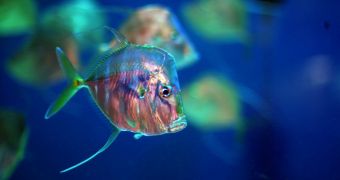Researchers in the United States have recently developed a new and complex computational model to account for the way fish swim, which could lead to innovation in the design of future robots and even medical prosthetic devices.
The team behind the work, based at the University of Maryland and at the Tulane University, opted to take into account both the internal and external forces that may act on fish's locomotion patterns.
Experts from several fields of research used these interactions to account for how the creatures move their flexible bodies to move ahead through the water with ease.
Both forces from the liquid environment, and from the muscle mass inside the fish, were found to combine in a complex manner to allow for the marine animals to dart through the water.
The collaboration is convinced that a better understanding of these mechanisms could lead to the creation of more advanced prosthetics, that will be able to make good use of the body's natural tendencies, rather than work against them.
Details of the new computer model were published in the October 18 online early issue of the esteemed journal Proceedings of the National Academy of Sciences (PNAS), Science Blog reports.
“When a fish moves in a fluid, muscles contract, but the fluid also moves against the body. So, the amount the body moves depends on the internal muscle force and the external reaction of fluids,” says expert Eric D. Tytell.
The scientist conducted the research while a postdoctoral researcher in the laboratory of UMD Department of Biology professor Avis Cohen.
“Previous studies examined body mechanics separately from fluid mechanics because it is a very hard problem to solve,” Tytell goes on to say.
“This is the first time that anyone has put together a computational framework to simulate this for large, fast animals like fishes,” the expert adds further,
A next step in this investigation is developing experiments in which sensor systems will attempt to replicate the way a fish interprets its environment. This is what ultimately dictates its motions.
“The first line of defense against external perturbations such as eddies in the water for fishes, or tripping on a rock for humans, isn’t the nervous system, but rather the body’s mechanics, kind of like the shocks on a car,” Tytell explains.
“If we can translate the mechanical stability that living organisms exhibit into the design of robots or prosthetics, we could really advance the technology,” he concludes.

 14 DAY TRIAL //
14 DAY TRIAL //